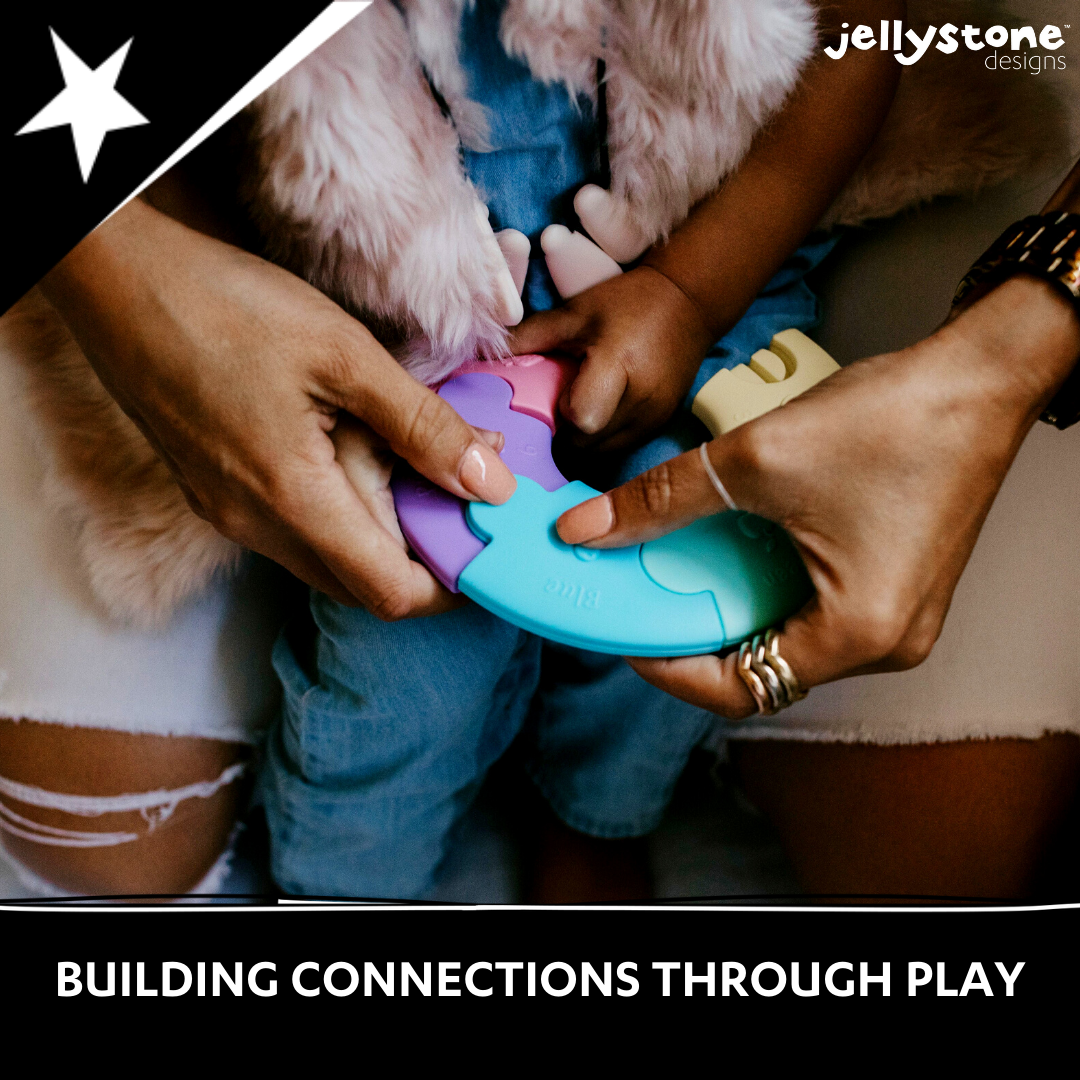
· By Amy L.
Building Connections Through Play
Building Connection Through Play
Play. It’s one of the most natural things for a child to want to do. This is because it is arguably the most instinctive (and fun) way for them to learn about themselves and the world. By fostering their curiosity, play suspends reality and opens up new possibilities for creativity and connection. So how can play be used to help children build connections with others and the world around them?
Building Parent-Child Connections
Play provides parents with an invitation to enter their child’s world. Taking time to be actively involved in playtime creates opportunities for deeper connection as you gain glimpses into how your child interacts with their environment.
As parents, we know it's incredibly hard to find time but it's important to set some regular time in the day or week to connect through play, even if it's just for 10-15 minutes.
Tips for encouraging parent-child connection through play
- Give your child your full attention. Turn devices to silent, make sure you’re not multitasking, try to suspend other thoughts/concerns.
- Be hands-on and get down on their level. It can encourage the child to be more self-directive in their play. Plus! You get to see the world as they do.
- Listen closely to your child. You will be surprised where their imagination goes and the types of play they come up with. Plus! They might give you instructions or need you to assist them with something.
- Ask questions. Kids love to know that you are interested and engaged in what they are doing.
Building Connections with Play Buddies
Play is often the foundation of many childhood friendships. The more your child plays with other children, the more your child will learn to play well.
For little ones, playing with others is the beginning of socialisation. Through play, they learn to share their emotions, they learn how to coordinate and collaborate and they learn how to create positive relationships with others from a young age.
Tips for encouraging connections between children through play
- Introduce the children to each other if possible as this can create a more safer, trusting environment.
- Provide different options for play e.g. set up multiple stations if you can if the children want to gravitate to different activities.
- Encourage taking turns. Create play situations that require two children to keep a game going so that they can enjoy the activity together.
- Stay close by and keep watch. This is reassuring for children, particularly if they do not know each other well. As they get to know each other better, you can be further away although still aware of what’s going on.
- Set up activities that support collaboration. This is great for older children who are able to communicate and coordinate with each other. Some great ideas are painting murals, building sandcastles, creating a play, and dance routines...
Building Connections to Nature
Through play, children build strong connections to nature and their environment. Spending time outdoors gives children the freedom and space they need to unleash their creativity and let their imagination run wild. And in doing so, they also develop a distinct awareness of natural spaces and how to care for them.
Building connections to nature can be important for instilling healthy habits in later life by promoting a more active lifestyle. Playing in nature also offers great opportunities to develop their hand-eye coordination and motor skills as well as their skills of observation and investigation. As such, building a positive relationship with nature from a young age can have a significantly positive impact on their wellbeing and development.
Tips on how to encourage connections to nature
- Provide children with loose parts to play with e.g. leaves, wood, branches
- Incorporate nature into art and craft activities
- Set up play activities outside where you can
- Take morning tea or lunch outside
- Explore natural areas with your child
- Visit local parks and make a note of wildlife / insects / marine life
- Do a scavenger hunt in the backyard
- Get children to help with gardening / weeding / watering the garden
We hope all these tips help your child build connections through play! If you think we missed anything, drop a comment below.
For more, visit The Jellystone Blog


